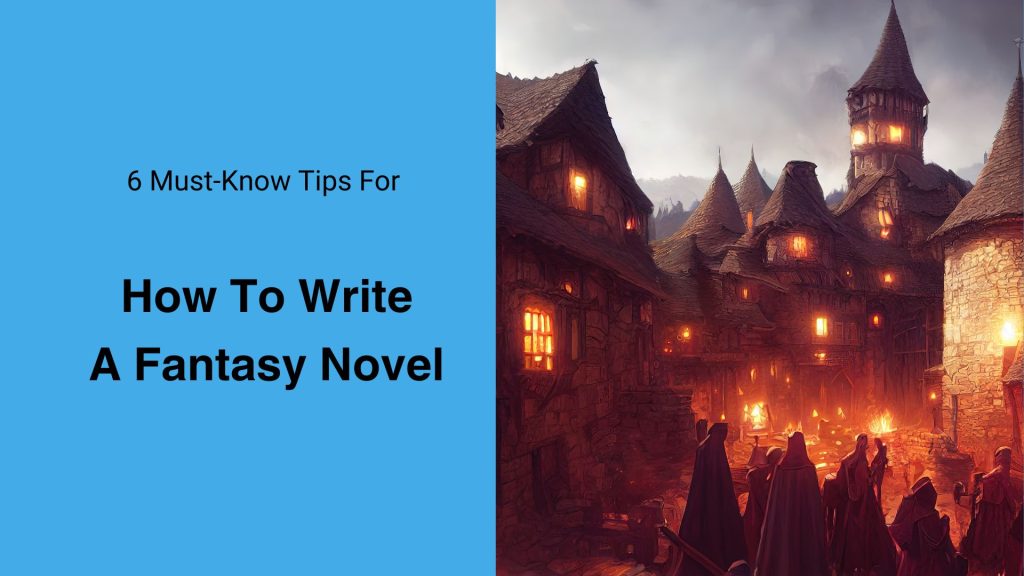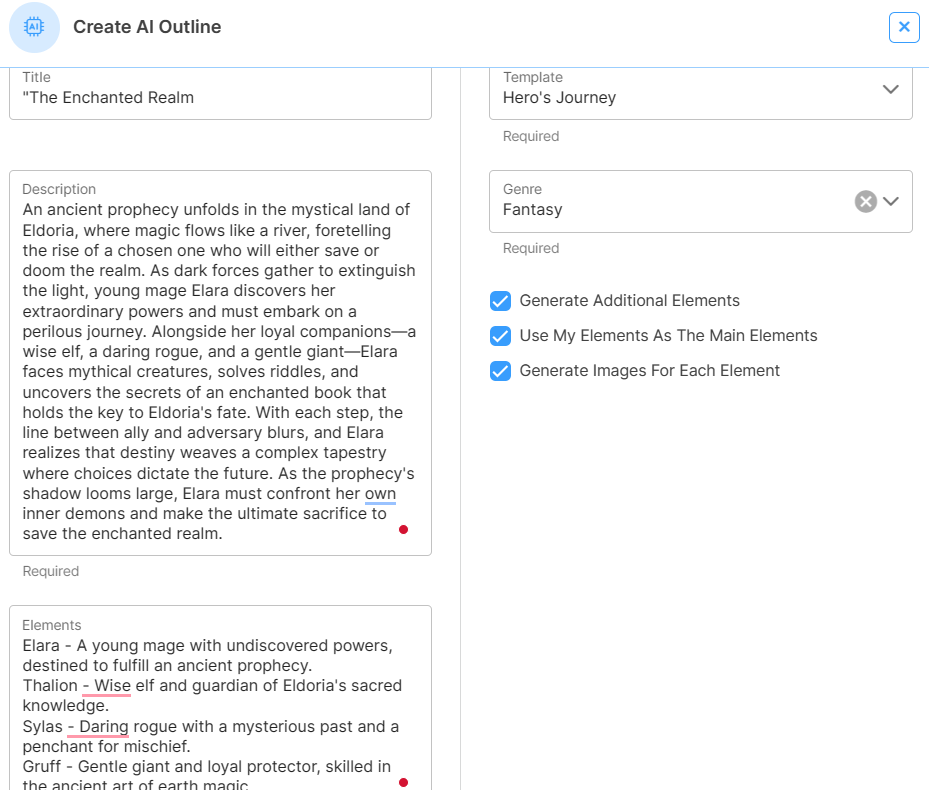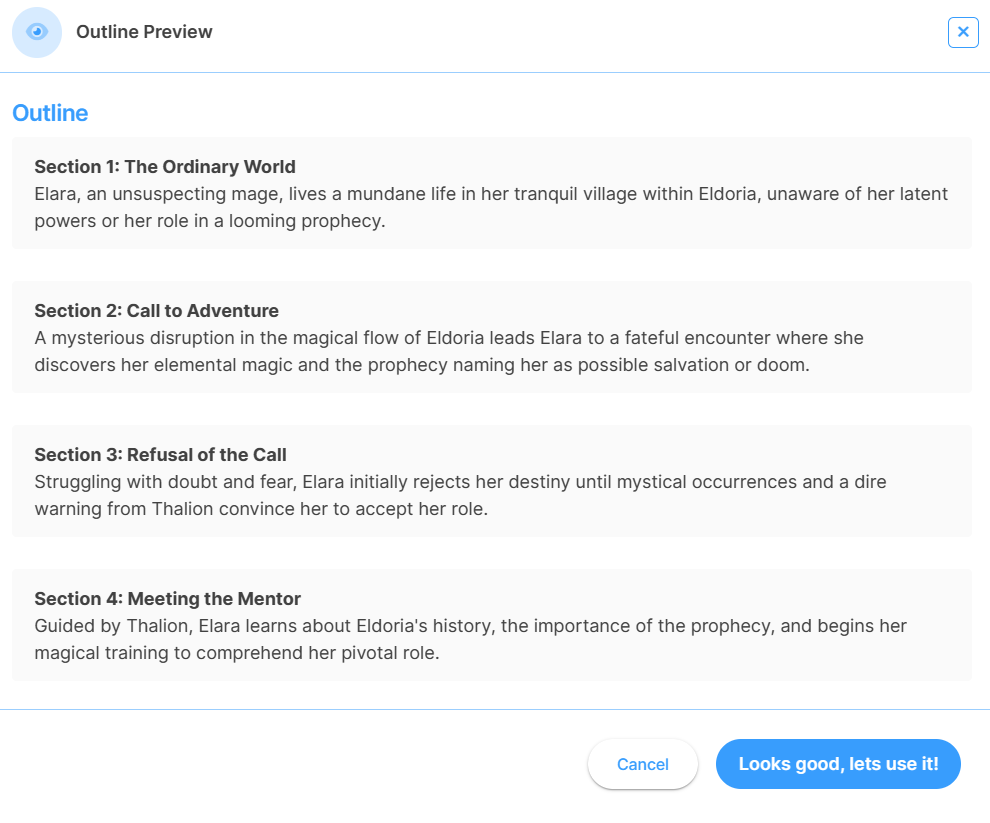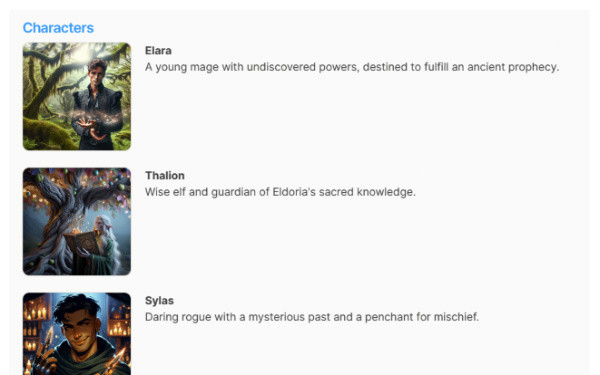How To Write A Fantasy Novel – Tips & Tricks

Fantasy is a very broad genre of fiction. One where you’ve got all the traditional challenges associated with writing, like plotting, characters, idea generation, etc. Plus, there is an entire world to build, too. Fantasy can be complex, but it mustn’t be overly complicated. Today, I’ll show you how to write a fantasy novel using a few essential tips and tricks.
Today, you’ll learn to:
- How To Define Fantasy
- Understand Your Niche Or Sub-Genre
- Build A Magic System That Works For You
- Write Character-Specific Lore
- Create Original Creatures
- Use A Versatile Ensemble For Character Driven Work
Aside from the tips mentioned above, I’ll also provide some resources and tools to help you build better fantasy worlds, keep track of all your data, generate unique characters, and more. So, without further ado, let’s get into it.
How To Write A Fantasy Novel (And Do A Good Job)
In many ways, fantasy writers face the same hardships as other authors. However, as mentioned, fantasy novels have the somewhat unique obstacle of world-building. On top of your plot, characters, and general writing, you’ll likely be building the world where the story takes place.
Before we get too far, just so we’re all on the same page, I want to cover two things – First, what is fantasy? And secondly, touch on how diverse the genre is.
You May Also Like: How To Write A Romance Novel – 10 Essential Tips
What Is Fantasy?
Fantasy is a broad genre, but some common threads are present, regardless of sub-genre. Fantasy is easily defined as fiction in which you build a fictional world, and there are some elements of mythology or folklore, even if they’re set in modern times. That’s it.
Outside of that, fantasy comes in all shapes and sizes. There are romantic fantasy novels, portal fantasy where someone is transported from one world to another, dark fantasy, and high fantasy, which most are familiar with. However, there are countless others as well.
The tips below are for fantasy as a whole. So, you’ll find helpful info even if you’re nowhere near the quintessential Tolkeinesque novel. With that slight disclaimer and basic definition out of the way, let’s learn how to write a fantasy novel and do a good job.
1. Understand Your Sub-Genre(s)
We’ve established that the fantasy genre is quite broad, and nearly countless sub-genres exist beyond high fantasy. I reiterate this point because I don’t want you to feel like there are things that aren’t allowed in fantasy or that whatever you’re writing doesn’t have a place.
It does. If you’re creating a world and have elements of folklore or myth (yep, those demon-hunter, vampire/werewolf stories set in modern times count), you’re writing fantasy. And understanding your sub-genre early in the process is helpful.
Even if you’re mixing sub-genres, knowing you’re going for a dark romance fantasy, for example, will keep you on that path. And will be a very different venture than a classic sword and sorcery, medieval-based story.
2. World-Building
Exactly what goes into building your world will depend on your story and specific sub-genre, which is another reason to establish those things early. An epic, high-fantasy story will have vastly different requirements than a story set in an alternate universe version of London.
Regardless of your specific needs, I have two pieces of worldbuilding advice. First, you don’t have to build your entire world before you start writing. In fact, you probably shouldn’t. Get your general concepts down, define the laws relevant to your story, and get to work.
It’s not uncommon for people to spend months world-building before they ever start writing. You can always build your world as you go. The second tip is to introduce your world to readers as they go, and when relevant.
For example, if your characters are in the forest, it’s a good time to mention your flora, fauna, and wildlife. If your land is at war, it’s a logical time to cover politics, military structures, alliances, and things of that nature. Readers don’t need to know everything at once when introducing your world elements.
In other words, don’t “info dump” on them.
3. Hard Vs. Soft Magic Systems
Magic isn’t a requirement for fantasy novels, but it’s very common in the genre. If you have magic in your book, it will fall into one of two categories – A hard magic system or a soft system. This refers to how rigid you define magical rules in your world.
With a hard system, you’ll define everything well and establish what can and can’t be done. Hard systems are helpful if magic is crucial in your story or you have main characters who do or learn magic.
A soft system is the opposite. With soft systems, you don’t have to go into as much detail about the laws of magic. These are common when magic exists within your world but is practiced by non-main characters or doesn’t play a pivotal role.
Figuring out which system works for you is important for writing a good fantasy novel. If magic is essential, clearly define what it can/can’t do and stick to it. If it’s more of a background feature, you don’t have to devote time and energy to all the nuances.
4. Character-Specific Lore
When you write characters, create profiles that detail their background, experiences, and knowledge, at least to some extent. This ensures readers (and you as the authors) understand how their actions and perspectives align with that character’s lore.
In my experience, it’s a good idea to have a framework for how characters got to be the way they are within the current narrative sooner rather than later. Of course, it’s ok for them to evolve throughout the story.
But it’s easy for them to act inconsistently or make decisions that seem out of character if their unique backgrounds are not considered in the earlier stages of the writing process.
That said, don’t feel the need to include the life story of every farmhand, barkeep, and soldier. But in general, some backstory goes a long way in understanding why things are how they are for certain people. This also ties into world-building, where you’ve defined societal and social norms for the land.
5. Create Original Creatures
There are plenty of standard fantasy creatures (dragons, goblins, elves, etc.), but those are only the tip of the iceberg. One of the best parts of world-building is creating brand-new original creatures for your universe.
If you look at examples like the Hippogryphs from Harry Potter or Billy-Bumblers from Stephen King’s The Dark Tower, it’s clear how lovable these creatures can be.
I recommend drawing inspiration from real-world ecosystems and evolution to create creatures that feel organic and integrated into your world. Then, consider how these creatures fit into the ecological balance and their role in your narrative.
Creating your own creatures, animals, and ecosystems is a tremendous creative endeavor that can add richness and authenticity to your setting. That said, you want to make sure they have tie-ins with the plot of your story.
For example, there isn’t much of a point in designing a race of blind beings that dwell underground in great detail if they won’t appear in the story plot you’re writing.
6. Have A Versatile Ensemble
We’ve established that your characters and their world are essential to writing good fantasy. That said, I find having more characters in fantasy fiction helpful than other genres. It’s not uncommon to have a central character in more literary genres and not many more.
More characters allow more perspectives into the world. For example, an event in the kingdom will affect the royalty of the realm much differently than the peasants. You can also leverage moral stain by having a situation be great for one group and troublesome for another.
In general, more characters and story elements lead to more dynamic situations. If your fantasy works only have a few characters and tend to be pretty cut-and-dry, consider adding a bit of character diversity.
Of course, if your work is more plot-driven (focusing on action, adventure, and the story), you may have fewer characters, and that’s perfectly ok. I just want to highlight that if your story focuses on character development and arcs, the sky is the limit when you invent the world.
Tools For World-Building And Fantasy Novels
We’ve covered more logistical tips for writing a good fantasy novel, but some software can also be helpful. Not only do you have your plot, but you’ve also got characters, their lore, the world you’re building, possible magic systems, and creatures you’ve invented.
Outlining and plotting for your story and keeping organized notes are essential to keeping things on track and complex info straight. In this section, you’ll find tools to help you do this and build your world as I described above.
World-Building With Living-Writer
LivingWriter has several tools needed for world-building that are integrated directly into your word processor. For example, you can create timelines, family trees, and more using the LivingWriter plotting boards. You also have devoted note sections for each character, setting, object, and manuscript, which helps you keep your info accessible and organized.
Fantasy Novel Templates
LivingWriter has several manuscript outines, including fantasy genres and story templates. These outlines can give you a complete framework to write your fantasy novel within. There are also AI story templates available.
Type your title, a short synopsis of your story, and any characters you have, and the AI will provide you with a fleshed-out template.

The great thing about LivingWriter AI is that it doesn’t write the story for you. Instead, it takes your ideas and gives you a structure for them.

A “fully outlined manuscript” is simply an organized, mapped-out place to write your unique novel. As I recommended above, AI character creation can quickly help build a diverse cast.
AI Character Creation
Like before, you type in a general description of what you want and receive a fully fleshed-out character. This feature makes creating specific character lore and backstory relatively easy, even without inspiration.

Conclusion
Fantasy is one of the most diverse genres in fiction, especially if you’re willing to think outside the box. It’s also one of the more creatively demanding genres to write. I hope you found today’s article helpful and can put these tips to good use for your next fantasy novel. Until next time, take care and happy writing.